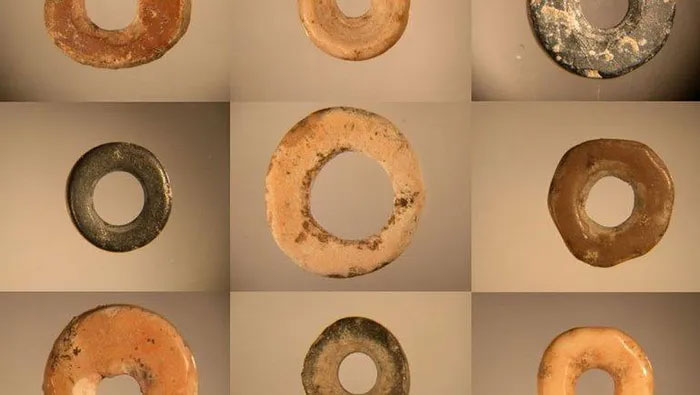Discover the 50,000-year-old 'ancestral' social network of Facebook, TikTok in Africa
It seems that tens of thousands of years ago, the people of Africa made social connections without the need for Facebook, Twitter, TikTok or any modern communication platform.
Radio Spunik reports that archaeologists claim to have discovered what they call the world's oldest social network, operating thousands of kilometers between southern and eastern Africa. This network of connections is specifically used to trade in ostrich egg shell (OES) nuts.

Beads made from ancient ostrich eggshells. (Photo: Technopixel)
A team of experts at the Max Planck Institute for the Science of Human History (Germany), which includes two lead authors, Jennifer Miller and Yiming Wang, conducted a decade-long study of more than 1,500 ancient OES particles discovered found in 30 cities of Africa.
The results, recently published in the journal Nature, show that the people who made beads 50,000 years ago exchanged them over great distances, thus enabling people to share many symbolic messages as well. strengthen alliances at that time.
Researcher Jennifer Miller has described these eggshell-sized seeds as hiding huge stories about the human past. "We know that these groups of people in Africa are genetically related to each other, but so far there's been no cultural evidence. It's amazing to know that people who lived 40,000 years ago came around the world," he said. 50,000 years ago, there was a kind of social network that stretched out like that,' the researcher emphasized.
In contrast, Mr. Wang rated the results of the study as surprising, due to the obvious modeling nature. "During the 50,000 years we examined, this is the only time when particles have the same characteristics ," he explains.
He is referring to the findings of research that shows the existence of an ancient social network that stretches over 3,000 km and connects people in two regions of Africa, which use almost identical OES particles. together.
Unfortunately, according to the researchers, this network finally ceased to exist in southern Africa 33,000 years ago, possibly due to a major shift in global climate.
Today, hunters and gatherers in Africa still make bracelets from ostrich egg shells, but not for the purpose of exchanging information.
- The addictive Facebook reason is revealed by a former Google employee
- Hackers attack Facebook, 50 million accounts are affected: What should be done at this time?
- February 4: Facebook social network was founded by Mark Zuckerberg
- Social network history
- 15 interesting things about Facebook you may not know yet
- Why is Facebook difficult in Japan?
- Social networks make us increasingly emotionless
- New social networks appear to compete with Facebook
- How to capture and share 360-degree photos on Facebook?
- Facebook opens the video calling feature globally
- How does Facebook 'outrun' Google?
- Using Facebook a lot makes you more lonely and negative
 'Fine laughs' - Scary and painful torture in ancient times
'Fine laughs' - Scary and painful torture in ancient times The sequence of numbers 142857 of the Egyptian pyramids is known as the strangest number in the world - Why?
The sequence of numbers 142857 of the Egyptian pyramids is known as the strangest number in the world - Why? History of the iron
History of the iron What is alum?
What is alum?